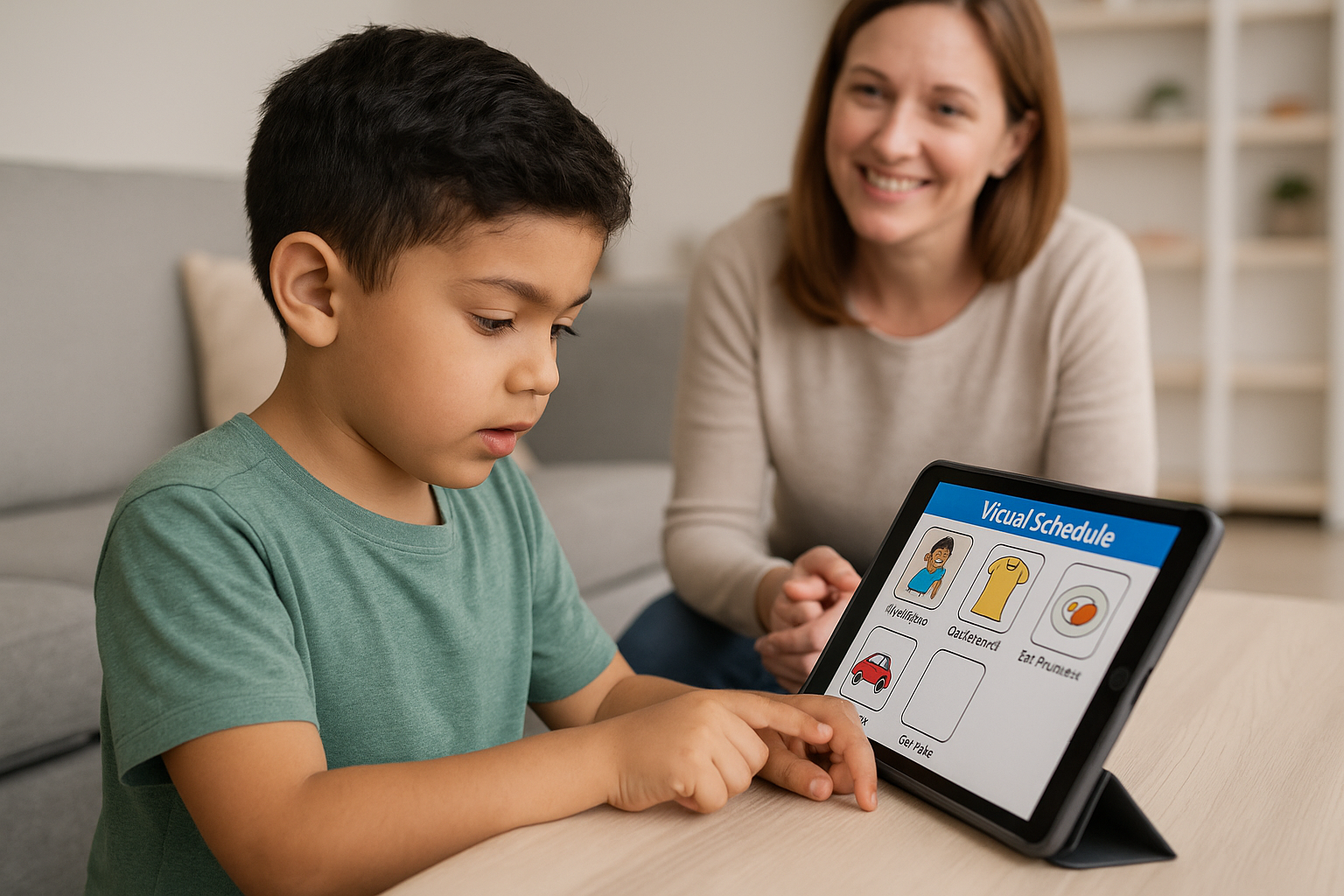
Why Technology and ABA Work Well Together
Children today grow up surrounded by technology—smartphones, tablets, apps, and interactive games. For many children on the autism spectrum, technology isn’t just entertaining, it’s a powerful tool for learning.
Parents often ask:
- “Can apps really help my child learn?”
- “How does technology fit into ABA therapy?”
- “Will using screens interfere with real-world skills?”
When integrated thoughtfully, technology complements ABA therapy by making lessons engaging, personalized, and accessible. Instead of replacing hands-on practice, it enhances learning and bridges the gap between therapy and daily life.
How Technology Supports ABA Therapy
1. Visual Supports Made Simple
Visual schedules are a cornerstone of ABA. With apps and tablets, families can create digital checklists showing steps for brushing teeth, getting dressed, or completing homework. Children can check off tasks, giving them a sense of independence and accomplishment.
2. Communication Tools for Nonverbal Children
Speech-generating devices and apps give nonverbal children a voice. By tapping icons or words, they can request items, share feelings, or participate in conversations. These tools reduce frustration and encourage communication.
3. Social Skills Through Role-Play Apps
Some programs use virtual role-play to teach conversation, eye contact, and turn-taking. These provide safe environments for practicing social interactions before trying them in real life.
4. Interactive Reinforcement
Digital games can serve as reinforcers. After completing a task, children may earn a few minutes with a favorite app. This adds motivation while keeping therapy fun.
5. Data Collection and Progress Tracking
Therapists often use tablets to record progress instantly. Families benefit from real-time updates, graphs, and personalized recommendations, making therapy more transparent and collaborative.
Real-Life Example: Technology in Action
Emma, a 9-year-old from Chesterfield, struggled with expressing her needs. She often became frustrated, leading to meltdowns. Her ABA therapist introduced a speech-generating app on a tablet.
Within weeks, Emma could tap icons to say “I’m hungry” or “I need a break.” Her parents described the change as life-changing: “For the first time, Emma had a voice.” Over time, she began pairing the device with spoken words, expanding her communication.
Parent Tips for Using Technology at Home
1. Choose Purposeful Apps
Look for apps designed for learning and skill-building rather than only entertainment.
2. Keep Screen Time Structured
Set clear boundaries for when and how technology is used—such as after completing a routine or during therapy practice.
3. Pair Technology With Real-Life Practice
Use digital schedules or role-play apps at home, then practice the same skills in daily life, like following steps for bedtime routines.
4. Involve Your Child in Setup
Let your child personalize their visual schedule or choose favorite icons on a communication app. Ownership increases motivation.
5. Stay Consistent Across Settings
Work with therapists to ensure technology use at home aligns with strategies used in sessions.
Opportunities in Chesterfield to Blend Tech and Real-Life Skills
Families in Chesterfield can practice ABA-supported technology tools during community activities:
- Chesterfield Mall: Use visual schedules on a tablet to guide shopping routines.
- Faust Park: Pair a digital timer with playtime to teach transitions.
- Local restaurants: Encourage use of communication apps for ordering food.
- St. Louis Public Library (Chesterfield branch): Explore educational apps and practice quiet waiting.
- Community centers: Reinforce digital role-play by practicing real-world social interactions.
These outings show children how technology can support, not replace, everyday participation.
Why Technology Prepares Children for the Future
Technology integration isn’t just about therapy today—it prepares children for lifelong success.
- At school: Digital tools help children stay organized, communicate with teachers, and follow schedules.
- At home: Apps support independence in daily routines.
- In the community: Communication devices empower children to interact confidently with peers and adults.
- In adulthood: Technology skills prepare individuals for jobs, independence, and continued learning.
By teaching children how to use technology responsibly, ABA therapy equips them with tools that will serve them throughout life.
Long-Term Benefits for Families
Families who embrace technology within ABA therapy often describe less stress and more connection. Parents feel empowered when they can use apps to support routines, and children experience pride when technology helps them succeed.
Rather than creating dependence, thoughtful use of technology fosters independence, communication, and resilience.
FAQ
Q1: Is it okay for my child to use a tablet during therapy?
Yes—when used intentionally, tablets support skill-building and motivation.
Q2: Can too much technology harm progress?
Excessive unstructured screen time may interfere, but structured use enhances learning.
Q3: What if my child resists using a communication device?
Therapists introduce devices gradually and reinforce attempts until children see the value.
Q4: Are there recommended apps for ABA support?
Yes. Many therapists recommend apps for communication, scheduling, and role-play, tailored to each child’s needs.
Q5: How do I ensure my child’s progress transfers to real life?
Pair digital tools with hands-on practice in home, school, and community settings.
